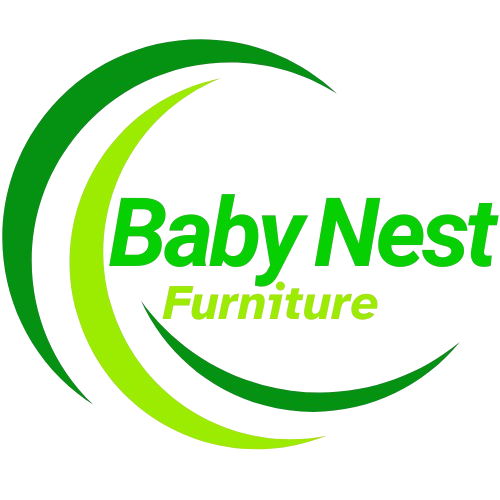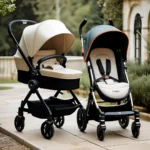
So it finally arrived; it occurs when you start looking for the best mattress, and two of the most effective options are latex mattresses and memory foam mattresses. These two mattresses have pros and cons and differ in fulfilling different sleeping needs. Thus, the real question is: Which mattress type suits you the best, Latex or memory foam?
In this blog post, we quickly run you through the pros and cons of both mattress types, which will help temper voltage across comfort, support, temperature regulation, durability, etc.
Latex Vs Memory Foam Mattresses Explained
Choosing the right mattress depends on how you sleep and what you like. Latex and memory foam are two common types. Let’s compare them.
What is Memory Foam?

Memory foam was first created by NASA for airplane seats. Now, it’s popular for mattresses because it molds to your body. It helps with pressure relief and gives a cradling feeling. Memory foam is great for people who want a “hug” from their bed.
Memory foam also reduces motion. This means if you share a bed, you won’t feel your partner moving around.
However, memory foam can trap heat and make you hot at night. Some newer types, like gel-infused or open-cell memory foam, help with air flow and cooling, but it may still feel warm for some people.
What is Latex Foam?

Latex foam comes from rubber tree sap. It’s known for its balance of comfort and support. Latex has a bouncy feel and doesn’t sink too much.
There are two main types of latex foam:
- Dunlop latex: Firmer and heavier, giving more support.
- Talalay latex: Lighter and bouncier.
Latex is more breathable than memory foam. It stays cooler and helps with airflow.
Latex is also hypoallergenic. It doesn’t attract dust mites or mold. It’s a great choice for people with allergies. Plus, latex lasts longer than memory foam. Most latex mattresses last for 15 years or more.
Latex Mattress vs Memory Foam mattresses
Comparison — Latex vs Memory Foam: Which Mattress Type is Right for You? consider the vast differences in these key areas:
1. Price
Latex mattresses are more expensive. This is because natural latex comes from rubber trees, which cost money to harvest. Synthetic latex is cheaper, but it doesn’t have all the benefits of natural latex.
2. Comfort and Support
Memory foam gives the best pressure relief. It molds closely to your body, making it good for joint pain. Latex mattresses offer more bounce and support, making them great for those who like a firmer bed with some spring.
3. Temperature Regulation
Memory foam can get hot because it traps heat. Latex is cooler, with better air circulation, making it a good choice for people who sleep hot.
4. Durability
Latex mattresses last longer. Natural latex can last 15-20 years. Memory foam lasts about 7-10 years if you take care of it.
5. Motion Isolation
Memory foam is great at isolating motion. If you sleep with a partner, it won’t disturb you when they move. Latex absorbs motion, but because it’s more responsive, you may feel more movement.
Memory Foam Mattresses — The Good, Bad or Just Hot Air?
When choosing between memory foam and latex, it’s important to consider the pros and cons of each.
Pros of Memory Foam:
- Pressure Relief: Memory foam molds to your body, helping side sleepers get the support they need.
- Perfect for Couples: It isolates motion, so you won’t feel your partner move at night.
- Cradling Feel: Many people enjoy the “hug” sensation memory foam gives.
Cons of Memory Foam:
- Can Retain Heat: Memory foam traps heat, which can make it uncomfortable for people who sleep hot.
- Off-Gassing: When you first unpack a memory foam mattress, it may give off a chemical smell.
- Memory foam life span: Memory foam can sag in high-pressure areas over time.
Advantages and Disadvantages of Latex Mattresses
As for latex mattresses, they have a unique feel. Weighing the Pros and Cons Here are some of the key pros and cons.
Pros of Latex Mattresses:
- Life-span: Latex lasts longer than memory foam mattresses.
- Latex Is a Cooler Mattress: Latex stays cooler and has better airflow.
- Sustainable, biodegradable material: Natural latex is biodegradable and better for the environment.
Cons of Latex Mattresses:
- Cost: Latex can be more expensive, especially if it’s made from natural latex.
- Support: If you like a softer feel, latex may not offer enough support
- Motion Transfer: Latex does absorb some movement, but not as much as memory foam.
Latex Vs Memory Foam – Comparison Guide
Choosing between latex and memory foam depends on your sleep needs, budget, and comfort. Here’s what to think about:
1. Sleep Position
- Latex mattresses: Latex is firm and supports your back and stomach.
- If you are a side sleeper: Memory foam is better for side sleepers. It helps with pressure on your shoulders and hips.
2. Temperature Sensitivity
- It is good for Hot Sleepers: Latex is cooler. It helps if you get hot at night.
- Cold Sleepers: Memory foam holds heat, so it’s good if you feel cold at night.
3. Allergies
- Latex Allergies: Don’t use latex if you’re allergic. You can try synthetic latex instead.
- Hypoallergenic Properties: Both latex and memory foam resist dust mites, mold, and mildew.
4. Budget
- Affordable: Memory foam is cheaper. Latex, especially natural latex, costs more.
Latex vs. Memory Foam Mattresses — Frequently Asked Questions
1. What kind of mattress is best for low back pain?
Memory foam and latex can both help with back pain. Memory foam relieves pressure points, while latex offers great support and stays cooler. Both are good choices, but latex is more responsive.
2.Will memory foam or latex mattresses off-gas?
Memory foam can have a chemical smell when new, called off-gassing. Natural latex mattresses do not have this problem and usually don’t off-gas.
3. What is the expected lifespan of a memory foam mattress or latex mattress?
Latex mattresses last longer, often 15-20 years. Memory foam lasts about 7-10 years before they start to sag and lose support.
4. How about Latex or Memory Foam Mattress on Adjustable Bed Frame?
Yes, both latex and memory foam mattresses work on adjustable bed frames. However, latex mattresses are more flexible and easier to adjust.
5. Is the Puffy Mattress More Eco-friendly?
Natural latex mattresses are eco-friendly because they are biodegradable and sustainable. Memory foam is less eco-friendly, but it is less toxic than synthetic materials.
Conclusion: Are You A Memory Foam Mattress Or A Latex Kind Of Guy?
Now you can answer the question: Latex vs Memory Foam — which mattress suits you? The choice is up to you.
Both mattresses have pros and cons. If you like motion isolation and pressure relief, memory foam may be your best option. But if you want a firmer mattress that lasts longer and stays cooler, latex might be the better choice.
The right mattress depends on your comfort, sleep needs, and budget. Whether you choose latex or memory foam, the goal is a great night’s sleep.
Read More:
How to Choose the Perfect Mattress for Your Sleep Style?
Hybrid vs Memory Foam Mattresses: Which Is Best for You?
5 Benefits of Chiropractor-Approved Mattresses
How Euro-Top Mattresses Enhance Sleep Quality
How to Prolong the Life of Your Mattress: Expert Tips
Subscribe To Get Update Latest Blog Post
No Credit Card Required









Leave Your Comment: